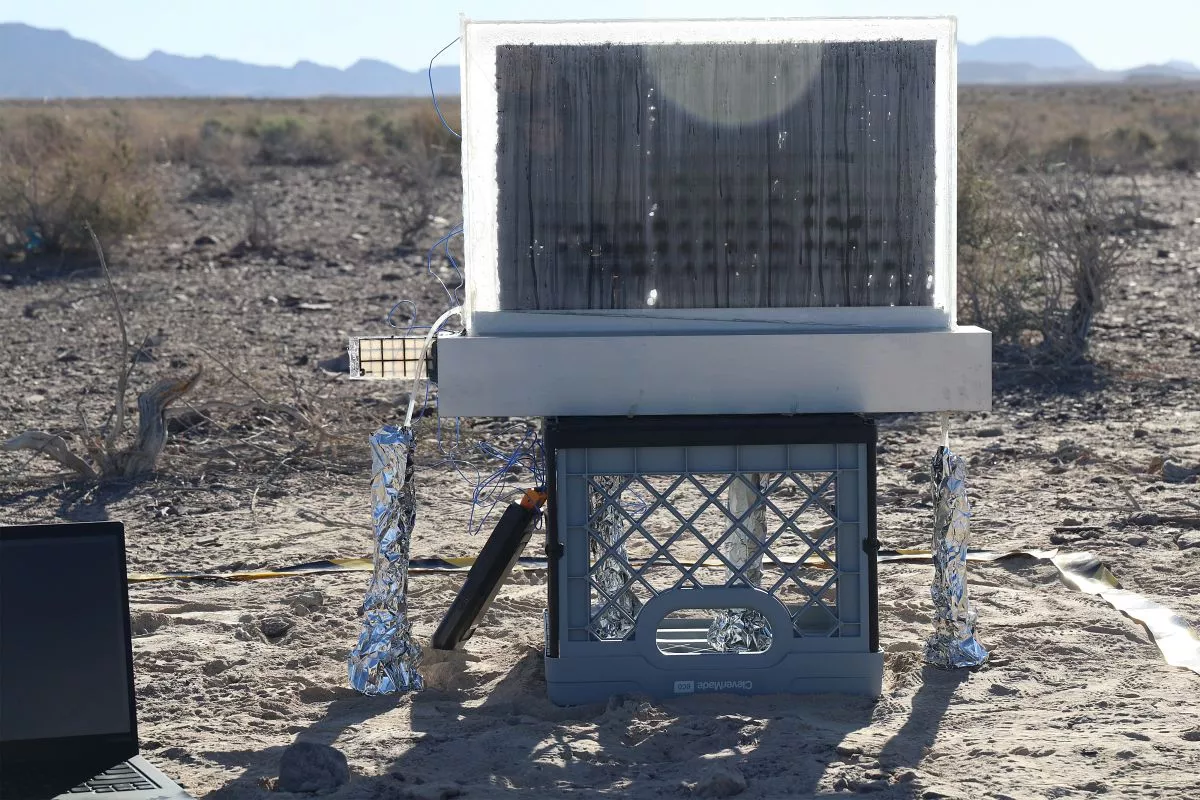MIT’s Water Harvester Works Without Power or Filters in Extreme Climates

Image courtesy of the researchers
There are many methods for extracting water from the air, but MIT researchers may have developed one of the most effective— a device that produces drinking water without requiring power or filters.
The team’s passive atmospheric water harvester features a vertical hydrogel panel that draws moisture from the air. While the concept isn’t entirely novel—other devices have also used hydrogels for this purpose—this approach offers a refined execution.
Bubble-Inspired Design Enhances Water Collection
MIT engineers incorporated some smart design features into their device. The hydrogel is shaped like bubble wrap, with small domes that expand as they absorb moisture—boosting surface area and vapor intake. This hydrogel sits beneath a glass layer coated with a special cooling polymer.
When the vapor evaporates, the domes collapse in a folding, origami-like motion. The vapor then condenses on the glass surface and is channeled through a tube as drinkable water.

Image courtesy of the researchers
A Safer Alternative to Salt-Infused Hydrogels
The team noted that many existing water harvesters use micro- or nano-porous hydrogels infused with salts to boost water absorption. However, these salts can sometimes leach into the collected water, making it less suitable for drinking.
To address this, the MIT researchers designed a hydrogel with a microstructure that lacks nanoscale pores, preventing salt leakage. They also added glycerol to the hydrogel, which helps stabilize the salt and stop it from crystallizing or escaping as water flows through the system.
As a result, the water collected by their device had salt levels well below the safety threshold for drinking—achieved without needing a separate filter. Thanks to these innovations, the team’s design stands out as one of the most promising passive water harvesters to date.
Field Tests Show Promising Results in Extreme Conditions
In field tests conducted in California’s arid Death Valley, their window-sized prototype collected between 1.9 and 5.46 fluid ounces (57 to 161.5 ml) of drinking water per day across varying humidity levels. Impressively, it outperformed many other passive systems—and even some powered ones—under the valley’s harshest dry conditions.

Image courtesy of the researchers
Of course, the amount of water produced by a single unit isn’t enough to meet daily needs—but the researchers envision deploying multiple vertical hydrogel panels in water-scarce areas to generate enough water for an entire household.
The test was conducted in November 2023, and the findings were published in Nature Water earlier this week. The team is now focused on enhancing the hydrogel’s properties for even better performance.
If you’re interested in other air-to-water technologies, there are also options powered by batteries or solar energy, devices using copper fins, spongy materials made from low-cost balsa wood, and even a coffee maker with a built-in water harvester—because why not?
Read the original article on: New Atlas
Read more: DJI Mavic 4 Pro Review A New Benchmark in Consumer Drone Technology











Leave a Reply